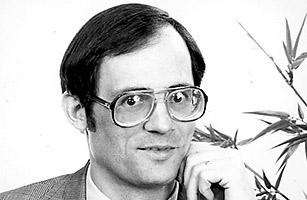
A circa 1980 photo of tax consultant Ted Benna who discovered a tax loophole which launched the now famous 401k profit-sharing plan
Sept. 20, 1980
It was a quiet Saturday afternoon, and I was at my benefits-consulting firm without the distraction of a ringing telephone and co-workers wandering into my office. I was there redesigning the retirement program for one of our bank clients. As I was considering the bank's goals, I was drawn to Section 401(k) of the Internal Revenue Code. Seeking a tax break and an edge over its competitors, the bank wanted to replace its cash-bonus plan with a deferred-profit-sharing plan under which employees wouldn't have access to the money until they left the bank. I realized that Section 401(k), which had become effective on Jan. 1, would allow me to do that. I could use this section to design a plan allowing each employee to put in whatever portion of the cash bonus he or she wanted. People who put money into the plan would get a tax break, but I knew it wouldn't be attractive enough to get many of the lower-paid employees to participate.
A bit of desperation got the creative juices flowing. That was when I thought of offering a matching employer contribution as an additional incentive. It was at this point that the potential of what I had just "created" hit. Most large employers at the time had savings plans in which employees put in money after taxes and received a matching employer contribution. I immediately realized it would be possible to change those plans so that employees would be able to put their money in before taxes rather than after. The bank client rejected the idea because its attorney didn't want the bank to do something that had never been done. As a result, the first plan we did was for our own employees. And this is what started the 401(k) savings-plan revolution.
Benna is a retirement-planning consultant to businesses